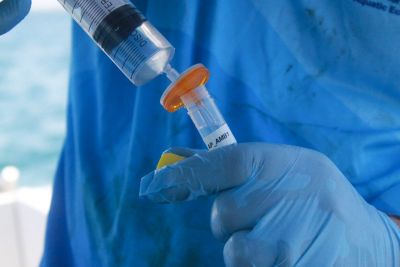Water quality monitoring
We monitor over 100 kilometres of coastline as part of our Ambient Water Quality Monitoring program with James Cook University (JCU).

For more than ten years, we have been dedicated to water quality monitoring. With 11 permanent loggers across our four ports, we collect over two million individual marine water quality records every year.
Working with scientists we’ve been monitoring Mackay and Hay Point since 2014, Abbot Point since 2015 and Weipa since 2018.
Why we monitor
We have three ports in the Great Barrier Reef World Heritage Area and one in the Gulf of Carpentaria so environmental stewardship is key to our operations.
Our monitoring program helps us understand the ambient conditions, which guide our decisions in port-related activities and planning.
How we monitor
Every ten minutes, our high-frequency water quality loggers record light levels, turbidity, water temperature, and wave energy movement.
Samples are collected and analysed in a lab approximately every two months for nutrients, herbicides, and heavy metals; and twice a year during wet season for pesticides using passive loggers.
Combining these methods allows us to build an expansive database and better understand the ambient water quality conditions over time.
Explore our data
You can view our Ambient Water Quality Monitoring Program data via our live dashboard.
Reports are also available on our research and reports webpage.
Our program continues to play a key role in understanding the Mackay-Isaac-Whitsunday region's waterway health. Our data contributes to the Healthy Rivers to Reef partnership’s annual Waterway Health Report Card.
Learn more about our ongoing partnership with James Cook University.